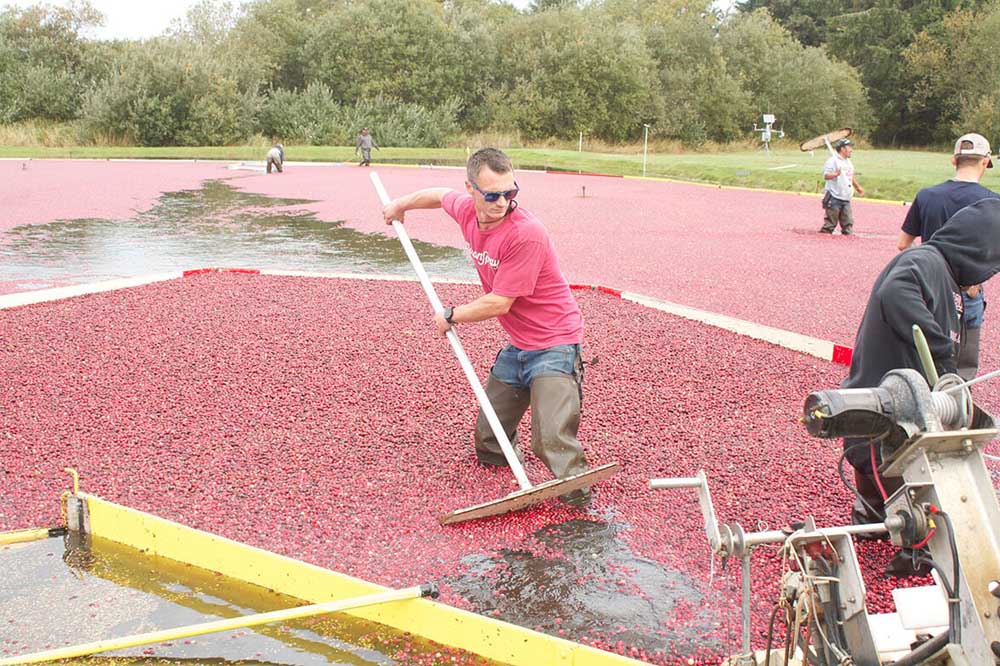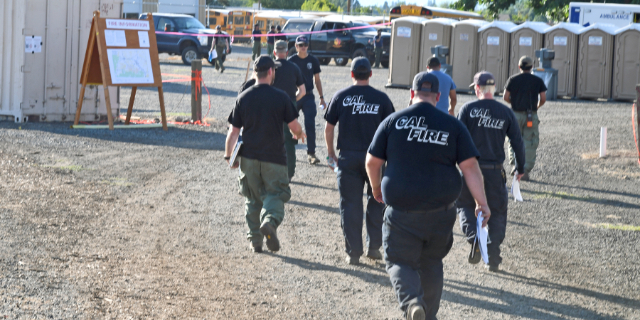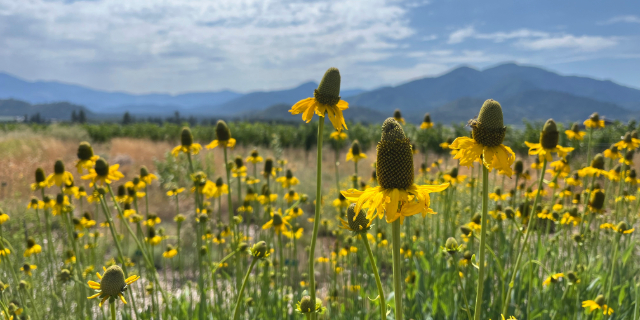Cranberry growers start harvest with smaller surplus
Published 6:00 am Tuesday, October 3, 2023

- Sean McHenry pushes cranberries toward a conveyor Sept. 28 on the Long Beach Peninsula in southwest Washington.
LONG BEACH, Wash. — Oregon and Washington cranberry farmers are starting to harvest berries without carrying the burden of a huge U.S. surplus that dragged down prices for several years.
Trending
The cranberry industry ended the 2022 crop year with 3.5 million barrels in storage, according to the Cranberry Marketing Committee. Inventory peaked in 2017 at 9.6 million barrels.
Growers approved volume controls in 2017 and 2018. Wisconsin, the top-producing cranberry state, has not come close to its record 2016 crop, which drove up the surplus.
As the surplus has gone down, prices have gone up. Average prices bottomed out below $30 a barrel, or 30 cents a pound, in 2018. The average price in 2022 was $38.12 a barrel, according to the USDA.
Trending
Prices increase
Long Beach Peninsula farmer Malcolm McPhail, an Ocean Spray grower, said he expects prices to top $42 a barrel this year. “The price is good. We’re making money,” he said.
Oversupply isn’t a problem this year, said Gale Turner of Turner Cranberries in Bandon, Ore. “Not like before, where we had a year-plus still in the freezer prior to harvest,” he said.
“From what I’ve been hearing, they’re looking for fruit. We haven’t got a price yet. We sometimes don’t get a price on the independent stuff until we almost deliver,” Turner said.
The USDA in mid-August predicted a good to average cranberry crop for Oregon. The USDA does not forecast Washington’s crop, which is smaller than in the other top-producing cranberry states of Wisconsin, Massachusetts, New Jersey and Oregon.
The USDA anticipated the U.S. crop to be down 5% from last year to 7.6 million barrels. Wisconsin and Massachusetts were expected to be down 5% and 12%, respectively, due to severe frost damage.
Bountiful harvest
McPhail started harvesting Sept. 25, about two weeks later than usual. Because of the dry summer, the farm was short of water to irrigate and flood bogs, he said.
McPhail’s goal is to average 200 barrels an acres. The first bog harvested yielded 384 barrels per acre, he said. “We haven’t hit that high (of a yield) in sometime.”
Cranberry farmers on the Southern Oregon Coast said they were concerned with the size of fruit, which is smaller this season, but the harvest appears above average.
Tipworm progress
“One of the reasons for a larger, bigger production this year is we’re getting a handle on the tipworm. It’s been a pretty bad pest,” Turner said.
Handler and grower Tony Arriola of Arriola Cranberry Co. of Bandon said the cranberry tipworm hasn’t been eradicated, but it’s more in control.
Most growers will start harvest in earnest in the second week of October, as the season was delayed by about two weeks. “It looks like there’s a lot of berries out there,” Arriola said.
Randy Aten of Aten Cranberries said he began harvesting early varieties from the Midwest and East Coast, such as Crimson Queen and Crimson King, on Sept. 14.
“So far, we’re better than last year,” he said.
His bogs of Stevens cranberries, a traditional Oregon variety, aren’t doing as well this year, he said.
Rain the last week of September should help with harvest, as precipitation saturated the soil. Farmers said they won’t need as much water to flood their bogs.
If the surplus rebuilds, growers will not be able to resort to volume controls.
The Cranberry Marketing Committee failed to win enough support from farmers in a June referendum and will be terminated.









